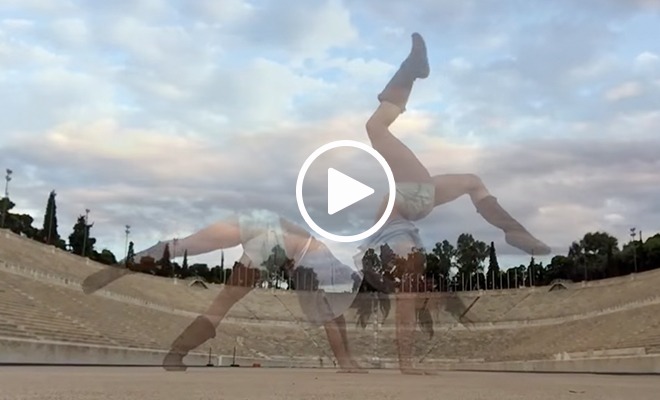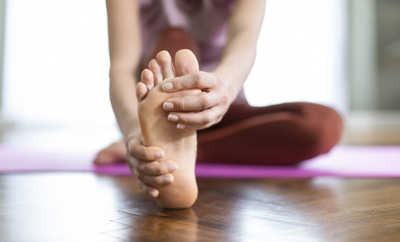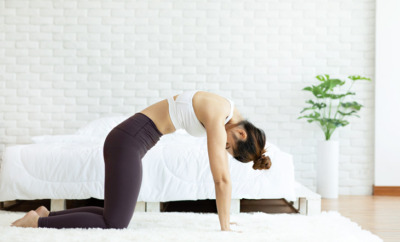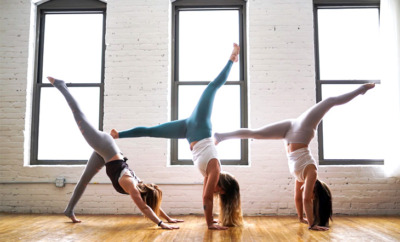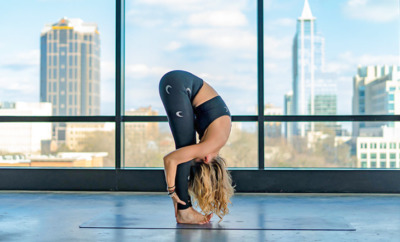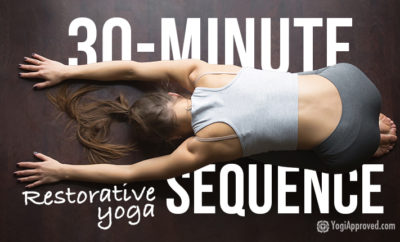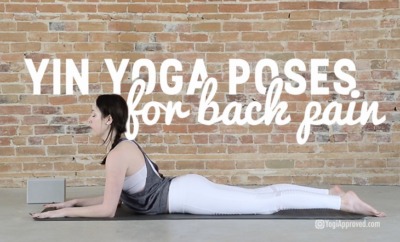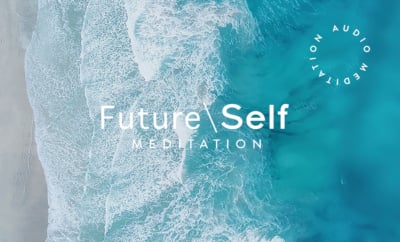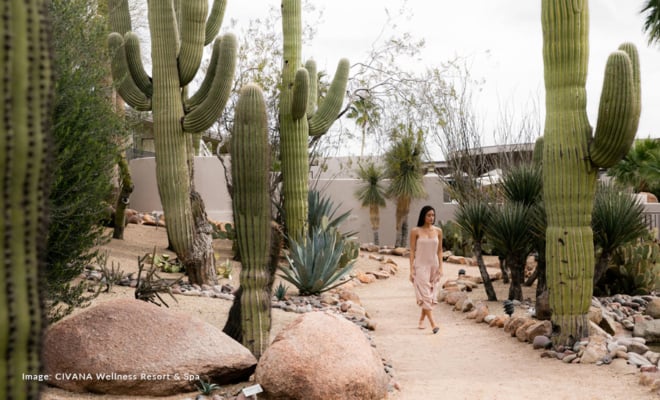5 Yin Yoga Poses For Beginner Yogis
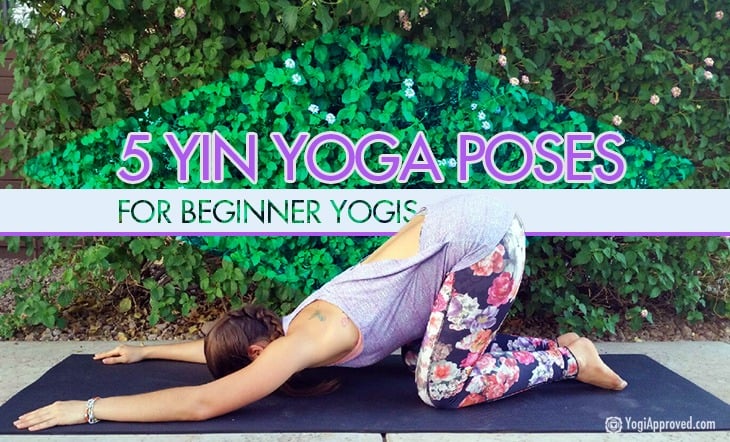
yin yoga poses for beginners
If you’re new to yoga, then you’re likely familiar with the flowing, sweating, leave-your-yoga-pants-soaked-through-to-your-skin variety. But there’s another side – quiet, introverted, and introspective. Yogis, read on for yin yoga poses for beginners.
Yoga has another side to it – a quiet, introverted, and introspective side. It’s the Yin to yoga’s more vigorous Yang… literally.
The style of yoga I’m alluding to is called Yin yoga. And while it may be the softer side of yoga, don’t be fooled into thinking it isn’t just as challenging as any Vinyasa, Bikram, or Ashtanga yoga class. Even though it may be just as challenging, don’t worry dear, there are yin yoga poses for beginner yogis too.
It’s just that the challenge is of an entirely different nature. It’s the kind of challenge that asks you to be completely still, completely passive, while stretching the boundaries of your capacity to be at ease within yourself – physically, mentally, emotionally, and spiritually.
Ok, Tell Me More About Yin Yoga
Yin yoga is often referred to by its nickname – the yoga of surrender. The Yin style acquired this alias because of what it asks practitioners to do. Let go. Of everything – all the tension, tightness and resistance – and melt into a long-held yoga pose.
In Yin yoga, all of the poses are performed either seated or laying down. They are held for several minutes at a time with relaxed, cool, and limp muscles. Many Yin yoga poses have their Yang counterparts, meaning they look similar to poses performed in more active styles of yoga. However, the Yin variations are fundamentally different due to the way they are approached – namely, without muscular engagement, without the energy of doing.
As you move through the following Yin yoga poses for beginners sequence, hold the intention of surrender, of letting go, of yielding to gravity, in your awareness. Treat each pose like an experience, allowing each new experience to unfold before you, rather than forcing it to unfold in a particular way.
5 Yin Yoga Poses For Beginners:
1. Butterfly Pose
Many of you know this pose as Baddha Konāsana, or Bound Angle pose. Begin by sitting up tall on your sitting bones and bringing the soles of the feet together. Slide your heels about one to two feet away (based on your comfort level) from your pubic bone and allow your knees to fall out to either side.
If you find it difficult to sit up straight in this pose, place one or two folded blankets underneath your seat. Prop yourself up so that you can remove any rounding from your spine. Additionally, if your knees experience tenderness in this pose, prop them up using yoga blocks or pillows.
Take a deep inhale through the nose, and as you exhale, allow your spine to round and your head to drop closer to your feet as you walk your hands forward.
As soon as you feel the first sensation of tension – in the outer hips, groin, lower back, or in any other spot – pause. Breathe into the sensation and invite your body to relax into it. Resist the urge to pull yourself into a deeper variation of the pose, and trust that when your body is ready to move forward, it will do so completely naturally and all on its own. Relax and observe the progression of this pose for about five minutes.
Exit the pose slowly and mindfully.
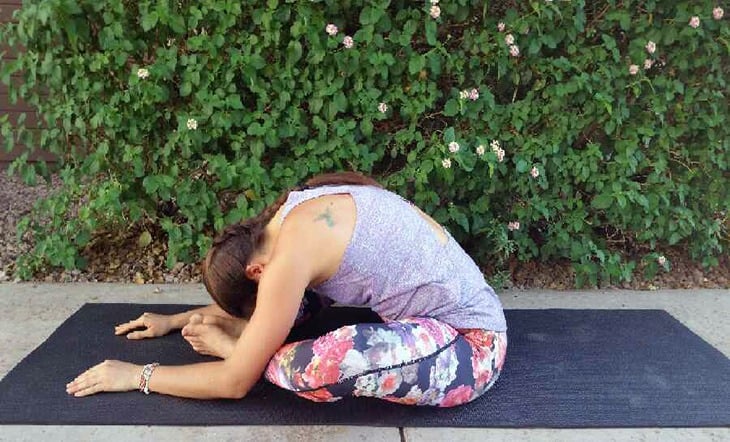
2. Anahatasana
Anahatasana – also known as Heart Melting Pose – will do precisely that! This soft, feel-good backbend gently opens the joints of the chest, shoulders, mid and upper spine; the same joints that, when tight, keep our hearts bound, rigid, and closed off. Spending time in this pose will help you melt into a softer, more open heart.
Enter into this pose by starting on all fours in tabletop position, and make sure your knees are directly beneath your frontal hipbones. Walk your hands forward and out, slightly wider than shoulder-width distance. Keep your arms outstretched and allow your chest to sink down towards the mat, while keeping your hips stacked over your knees. Rest your forehead on the ground and breathe slowly and softly here for three to five minutes.
To decrease the intensity of this pose, spread your arms further away from each other. You can also rest your chest on a bolster or pillow. If, on the other hand, your body is asking for more sensation, rest one ear to the mat at a time, which will isolate the stretch into one shoulder. Spend an equal duration of time resting on each side.
To exit the pose, mindfully walk your hands back underneath your shoulders and press back into tabletop position. Do a few cat/cow stretches to release this pose.
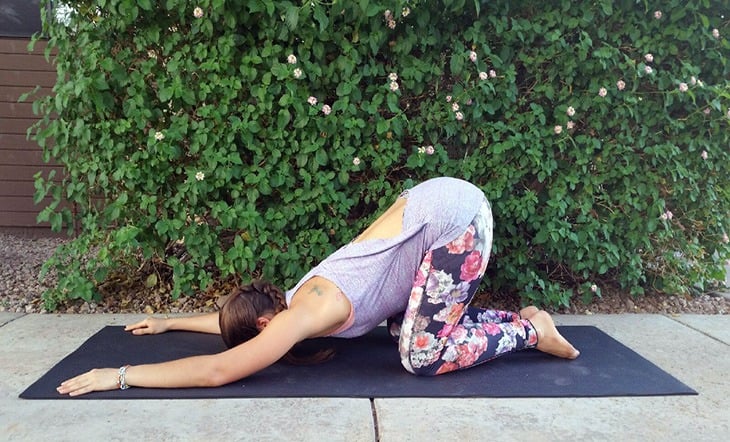
3. Dragon
If you have tight hip flexors (and let’s face it – who doesn’t?), then you’ll want to become acquainted with Dragon pose. Dragon lives up to its name and is a monster of a pose – which is why we had to include it on our list of yin yoga poses for beginners.
Be sure to move into this yin yoga pose slowly and mindfully, backing off when you need to, but also honoring your body’s call to sink deeper if it invites you to do so.
From Downward Facing Dog, step your right foot between your hands with toes facing forward. Drop your left knee to the floor and uncurl your left toes, resting the top of your left foot on the mat. While resting your hands on either side of your right foot, either on the floor or on a set of blocks, allow your right knee to flex deeply as your left hip melts towards the floor. You should feel deep sensation in the front of the left hip and thigh.
Remain mindful of your breath, keeping it soft and fluid for the duration of this pose. Also be aware of any muscles that are bracing themselves and invite them to release. If you are new to Dragon pose, try to rest here for two to three minutes, eventually working your way up to hold for five to seven minutes.
Release this pose by returning to Downward Dog, and then repeat on the opposite side.
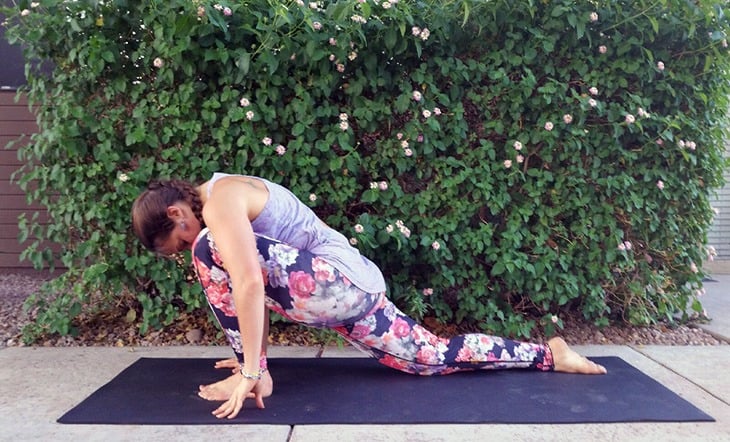
4. Reclining Twists
In our more active Yang yoga classes, reclining twists are typically performed at the end of class – after we have been thoroughly warmed, stretched, and made malleable. Though on the surface, the Yin variation of this pose looks exactly the same, inside it is experienced very differently.
Our cool, unstretched, somewhat stiff muscles mean that this pose will be felt more immediately in the joints (which is what all Yin poses target), along with the connective tissues between the bones themselves. Don’t be surprised if you feel and hear a few creaks and cracks as your spine, rib cage, and hips release in this pose.
To enter this twist, lay on your back and hug your knees into your chest. Then spread your arms to a “T” shape or bend the elbows into cactus arms and rest the backs of your hands on the floor with your palms facing up.
Gently lower your bent knees all the way to the floor to the right of your yoga mat, and if it feels ok for your neck, gaze softly over the left shoulder. If your left shoulder lifts from the floor and is causing discomfort, bend your left elbow and rest your palm on your rib cage.
To decrease the intensity of this pose, prop your legs up on a stack of blankets, a bolster, or a pillow. To increase the intensity, wrap the top leg over and then underneath the bottom leg, as if you were sitting cross-legged in a chair.
With each breath, let go of any tension you may be holding on to and melt into this yoga pose for five minutes on each side.
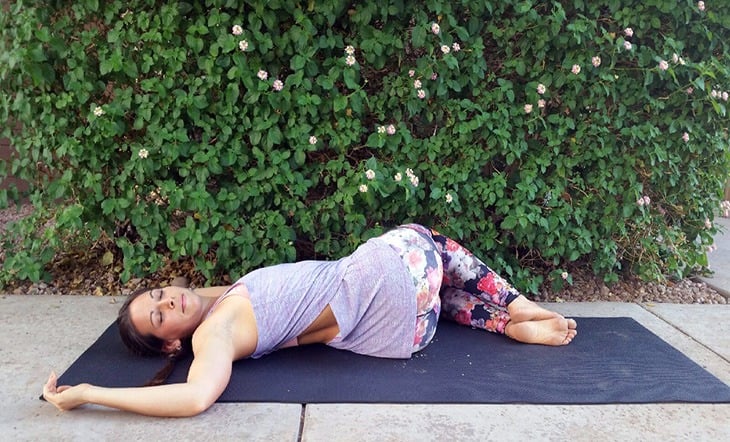
5. Belly Savasana
As such a deeply introspective practice, Yin should always be concluded with an equally deep and introspective Savasana. Taking Savasana from the belly facilitates this by physically keeping the body turned in upon itself – allowing the mind to remain focused inwardly as well.
Lay flat on your stomach, resting your right cheekbone to the mat. Lift your left hand overhead and bend your left elbow. Allow your right arm to rest by your side, palm facing up. For some, softly bending the left knee and extending it off to the side will add additional comfort and ease. Spend about four minutes here and then switch sides, resting there for another four minutes.
When you feel complete, press back into Child’s pose and spend a few moments focusing on your breath. When you’re ready, sit up on your heels and ground yourself by placing your full awareness on your body. Bring your palms to face up on your knees and listen to the silence both in you and around you.
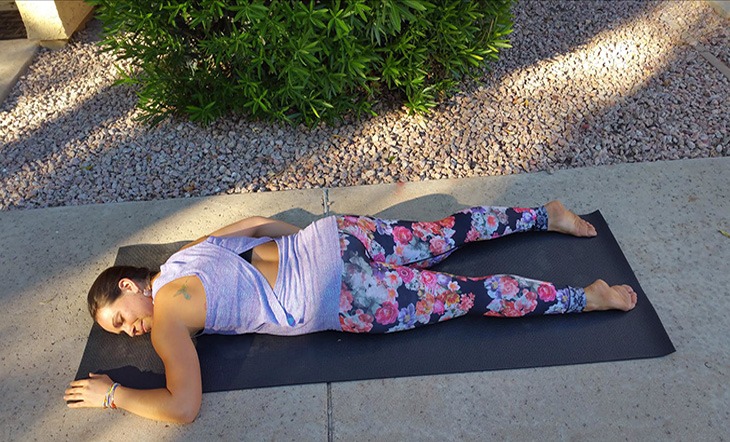
These Yin Yoga Poses for Beginners Are Really Suitable for ALL Yogis
When practicing Yin yoga, the goal is not to find a deeper variation of each pose. The goal is instead to let go of control. When we do this, something beautiful happens. When we let go of control, the body softens and the depth we were striving for occurs naturally and comfortably.
Know that you created this inward silence. Accept this peaceful quietude into your heart, and know that it will only grow deeper as you grow in your practice of yoga’s quiet side — Yin yoga.
Are You Interested in Trying Yin Yoga?
Check out our 7-class Yin Yoga Program. See the classes here.
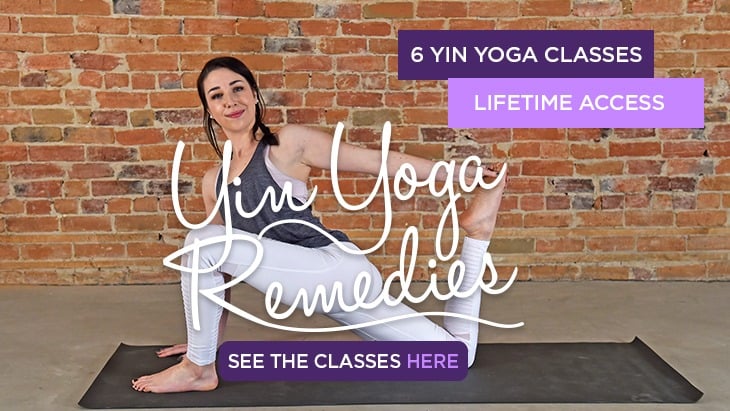
You May Also Enjoy
"Daydream" A Beautiful Yoga-Dance By Meghan Currie (Video)
Yes, Meghan Currie is at it again, using yoga as an artistic form of expression and creating another masterpiece of inspiration. You go girl! We love you for it!
Read »
Kari-Ann is a freelance writer, yoga teacher, and fitness coach. Her approach to all three is to get down and dirty with the realness and rawness of being human. Kari-Ann believes that spirituality is experienced in all the dust and divinity that is the earth, our body, and the seen and unseen. Her passion is to be a continual student of her heart, body, soul, and mind, and to share what she learns with others.
Don't Miss These



This Month's Letter
From the Editor
Monthly motivation and food for
thought from our founder.

